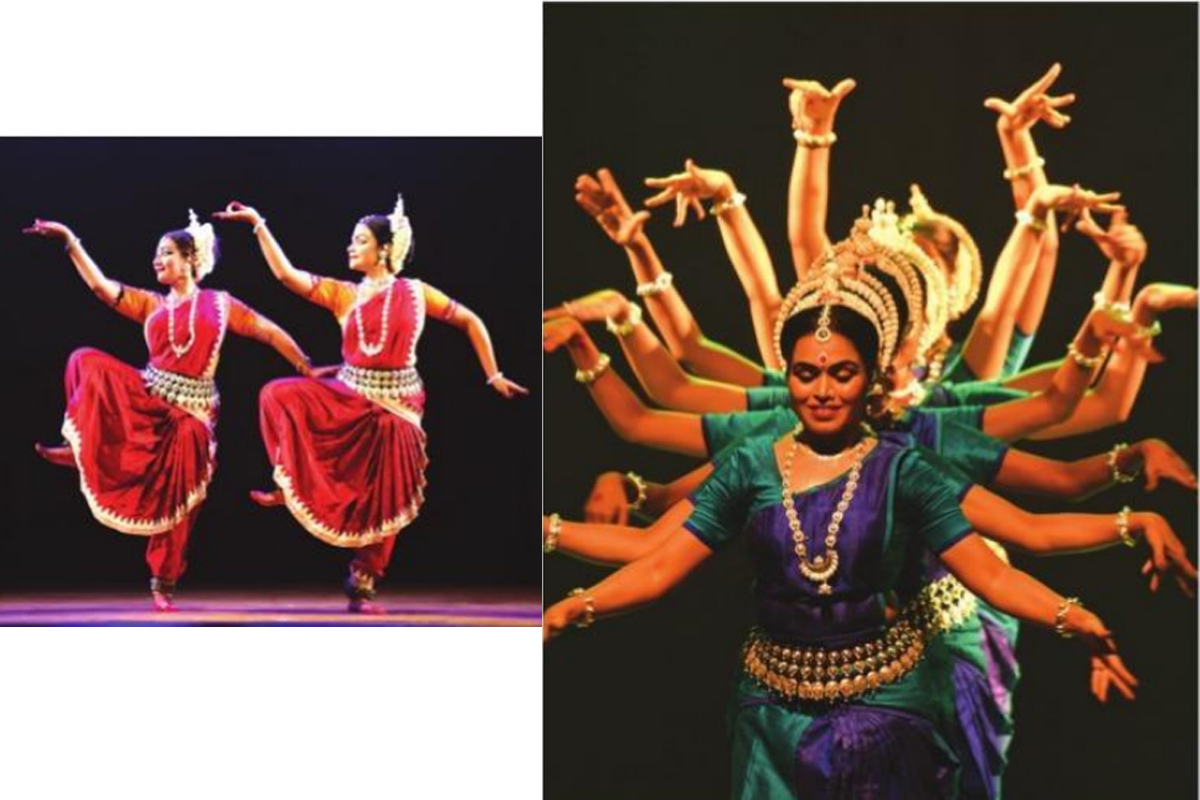India’s 1st HPB radiology course introduced at AIIMS Bhubaneswar
AIIMS-Bhubaneswar has achieved a significant milestone in medical education and training by successfully organising India’s first-ever Hepato-Pancreato-Biliary (HPB) radiology course.
The annual Guru Kelucharan Mohapatra Award Festival featured some of the finest musicians and dancers. A review by Manjari Sinha.

Photo: SNS
Srijan, the Guru Kelucharan Mohapatra Odissi Nrityabasa, organised the 25th edition of the Guru Kelucharan Mohapatra Award Festival, featuring some of the finest musicians and dancers celebrating the rich legacy of the legendary Guru at the Rabindra Mandap, Bhubaneswar. Guru Ratikant Mohapatra, Director Srijan and also the festival director, has been painstakingly carrying forward the late maestro’s passion and love for art and culture by organising the festival honouring the outstanding artistes from the field of dance, music, theatre and cinema. The Silver Jubilee celebration of the prestigious festival was marked by a seven-day music and dance festival instead of the annual five-day affair.
There were music and dance performances, opening with bhajans by Anup Jalota and Odissi group choreography by the renowned Odissi danseuse and Guru Meera Das and her Gunjan Dance Academy on the inaugural evening. The second evening had a classical music fusion Trio comprising Flute by Paras Nath, Mandolin by U Rajesh and Violin by Deepak Pandit, and Odissi group performances by Suravi of Guru Pitambar Biswal and Orissa Dance Academy of Guru Aruna Mohanti. Sarangi recital by Sabir Khan with Tabla by Ishaan Ghosh and Odissi solo by Niharika Mohanti and group presentation by Rudrakshya Foundation was followed by Hindustani Vocal by Indrani Mukherjee and Odissi groups of Soor Mandir of Jyotsna Rani Sahu and Tridhara of Guru Gajendra Panda on the fourth evening.
Advertisement
The mesmerising Sarod recital by Debasmita Bhattachara from Kolkata made one wonder how Ratikant discovers these brilliant performers. Debasmita bore the stamp of creativity in her rich imagery of raga Durga and the Pilu composition of Pt Radhika Mohan Moitra, played on request by a discerning listener. The brilliant Tabla accompaniment by Sandeep Ghosh enhanced the melodious music. Guru Niranjan Raut’s Nupur Group’s Khamaj Pallavi and ShivaTandav were followed by Guru Ileana Citaristi’s Art Vision group presenting “Akshar”. The thoughtful choreography, based on the alphabets of Oriya language, scripted by Devdas Chhotray, composed by Lakshmikant Palit and choreographed by Ileana herself, who also did the light designing, brought a breath of fresh air both in content and treatment of the out of the box presentation. The backdrop, with the alphabet being drawn on sand, the appropriate music and dance gelled well. Odissi music vocal recital by Bijay Kumar Jena heralded the next evening. Trained under Gurus like Pt Gopal Chandra Panda, Ramhari Das and Pt Raghunath Panigrahi, Bijay Kumar is an accomplished solo artiste, well-versed in Raganga, Bhavangaand Kriyanga; obvious in his detailed treatment of raga Bihag. He also presented raga Marwa, Bageshri, a Champu and Janana before concluding with a devotional song in Bharavi.
Advertisement
Guru Ashok Kumar and his Nrityashala presented “Mun”, meaning Me, underlining the negative ego of human beings, depicting examples like Hiranyakashipu from Satyuga, Ravan from Treta, Kamsa from Dwapar, continuing in Kaliyug till date. The use of mask brought a contemporary touch to the dance presentation.
The Nrutyayan group of Guru Durga Chanan Ranbir, a representative of Guru Deba Prasad Gharana, presented JagannathaGopinath, depicting the comparative attributes of both the deities scripted by Kedar Mishra, music by Sukanta Kumar Kundu with rhythmic compositions by Dhaneshwar Swain choreographed by the Guru himself. The concluding evening opened with the Award ceremony when the Nalco GKM Award was bestowed upon Guru Harmohan Khuntia, Guru Durga Charan Ranbir, Sunil Kothari, Leela Venkatraman and Avinash Pasricha. The Nalco Yuva Prativa Samman went this year to Swapnaloka Dasgupta, Rahul Acharya and Rajshree Praharaj for Odissi, Anwesha Mahanta for Sattriya Nritya and Satyabrata Katha for Odissi music.
The festival reached its climax with Namami Gange, an excellent thematic choreography of Guru Ratikant Mohapatra with text and lyrics by Nityanand Mishra in Sanskrit, describing the story of the sacred river from its descent on earth to the present polluted state she is made to suffer by us humans, presented by the much acclaimed Srijan repertory of chizeled dancers. Music by Lakshmikant Palit left much to be desired at places when Lord Shiva holds her thundering velocity and momentum of the agressive river in his matted locks. The scene of four dancers carrying the dead body of Mukti-Kami, who came to die in Varanasi for liberation and the burning pyres at Manikarnika Ghat, came alive with the red flames through the imaginative choreography and the light designing. The photo exhibition of Guru Kelucharan Mohapatra’s multifaceted personality in the foyer and the well-brought out brochure were the added attractions of the festival.
Advertisement